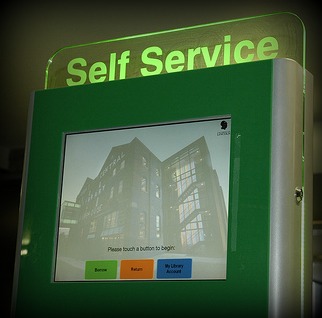MICHAEL WEISKIRCH
HR Technology Specialist
 It’s hard to argue against the virtues of employee self-service, with benefits such as:
It’s hard to argue against the virtues of employee self-service, with benefits such as:
- Automation of time-consuming manual HR processes
- 24-hour access to information for employees to things like benefits and payroll information
- Immediate recognition of your transactions
- Elimination of data input error
As the window to employees, ESS can be a critical piece of a company’s HR and payroll platform. And, in the last several years, employee self-service has been delivered to smaller employers (less than 500 employees), thanks to advancements in software.
For your younger and more tech-savvy employees, ESS is fast becoming the standard way to operate in a corporate environment. In fact, many pieces of HR software have mobile application options.
Issues Launching New Technology
Despite the strong business case for ESS, most organizations still face a challenge adopting HR technology. Will the launch go smoothly? Will employees use the software?
ESS tools have existed for well more than a decade in HR. Yet adoption of payroll, performance management, and other related platforms is far lower than expected. Why?
The answer to this question is complicated and varied. It begins with a lack of commitment prior to purchase and extends to lack of interest in organizational change once the solution is in place. Throw in a measure of poor user experience and haphazard communication, and you are certainly several steps away from where you need to be. Consider the following five tips on how to address those challenges. You can build a sustainable ESS strategy within your organization!
1.) Demonstrate Value Out of the Gate
When it comes to a company initiative that touches an entire organization such as ESS, buy in and engagement are critical starting points. If the technology makes sense to each key stakeholder — CFO, CEO, HR, management — it is much more likely to get support.
People in your organization are more likely to support such a project if they can understand the value of the initiative to them. Articulating value to key stakeholders falls into two principal areas:
1.) Lowering cost per transaction
2.) Improving company productivity
Research supports these arguments. A widely touted CFO.com study shows as much as an 80 percent savings, thanks to HR technology, over manual employee benefits enrollment ($109.48 vs. $21.79). Further, the respected Cedar Crestone survey showed that more than 80 percent of top performing organization staff have self-service access to administrative applications such as basic data changes, payroll, and benefits. If you can quantify the gains your company will see with ESS, you will experience greater success.
2.) Identify Areas of Process Improvement
Before you embrace self-service HR, it’s important to determine the areas within your organization that can make appreciable gains from such a change. Automation doesn’t always translate to efficiency, and some HR processes do not translate well to ESS.
Document your HR steps for tasks such as onboarding new hires, managing performance, and reviewing compensation to see how a proposed ESS process will improve those situations. As you introduce ESS to replace manual workflows, go through the steps an employee would follow. Is this a good user experience? Is it easy to complete?
Ask employees run through it on test basis and provide feedback. If the process is cumbersome, look for ways to smooth out the rough edges. This exercise will help gain the efficiencies you're looking for with ESS.
3.) Start Simple
If you are just starting an ESS application or looking to re-introduce one to your employees, make it easy to embrace. The 2012 Cedar Crestone survey on ESS suggests implementing easy administrative tasks first, such as basic data changes and payroll. Victories with simple tasks lead to 30 percent greater user adoption.
Once employees see how easy it is to use the ESS, and how the application increases efficiency, they will be more likely to embrace expanded functionality in an ESS environment.
4.) Provide Adequate Training and Access
Depending on the makeup of your workforce and job site, your challenges for ESS may be rooted in training or access issues. A recent article by Delphia Consulting pointed out that:
“In terms of access to self-service, not all employees may have a PC or email. While kiosks in lunchrooms or other areas shared by all employees are certainly an option, security can become an issue.”
Determining access from a workspace perspective is useful. Also, if your ESS is accessible over the Web, it's a good idea to conduct a basic access survey of your employees. Consider an on-site demonstration when training your workforce. Simple written instructions with visuals including screen shots also are a best practice.
5.) Institute Effective Change Management
To some employees, ESS may feel like bagging their own groceries. In reality, HR applications provide greater conveniences, speed, and more privacy from manual process. Being able to demonstrate the advantages of ESS over manual workflows — comparing steps and time side by side — can go a long way toward getting the right buy-in from your staff.
Other approaches that have proven successful are creating contests and engaging employee communication to encourage participation. For some, the tough-love approach is needed to get employees to take action. Know your workforce to maximize your adoption and results.
Many companies are enjoying the benefits of ESS. Getting there, however, takes commitment and careful planning.
Related Posts:
HR COMPLIANCE ALERT: New I-9 Form Required Starting May 7
HR Compliance: Small & Mid-Sized Firms Have Super-Sized Challenges
How Mobile Technology Can Actually Make Life Easier for HR
5 Best Practices for Onboarding [Onboarding 101: The Series]
.png?width=69&height=53&name=Acrisure%20Logo%20(White%20Horizontal).png)

![[ ATTEND THE WEBINAR ] Developing a Self-Service Culture Using HR Technology](https://no-cache.hubspot.com/cta/default/38664/93f18190-76c5-46db-b056-f3ab38f259d7.png)
